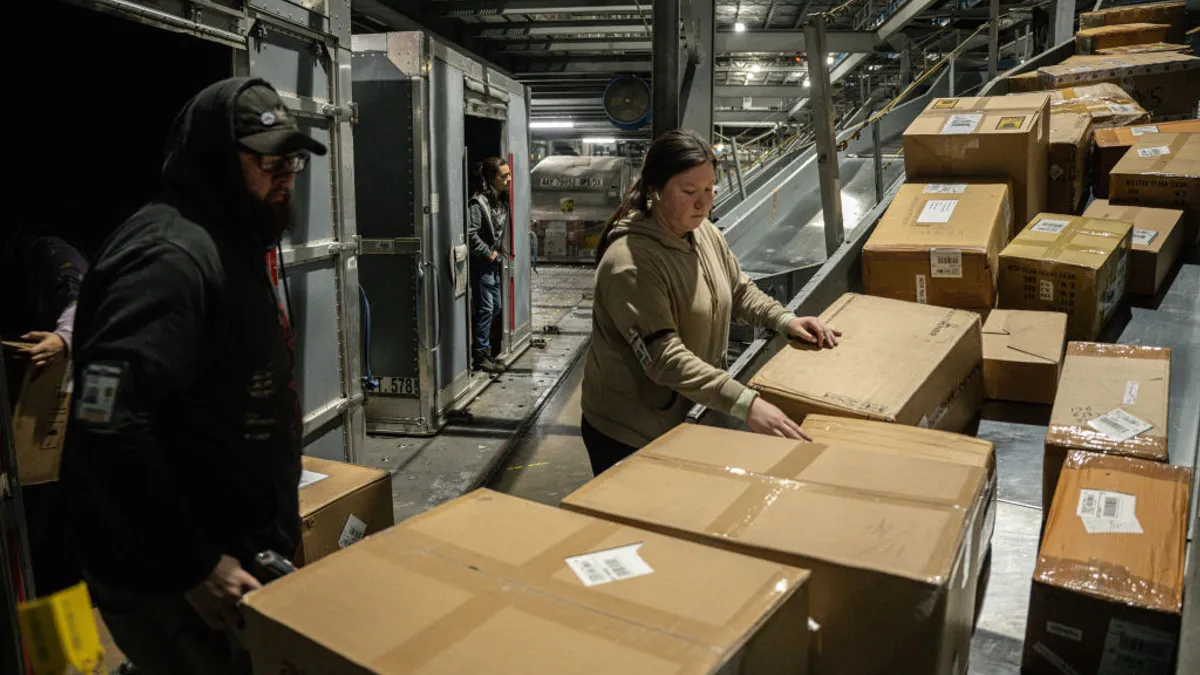Dive Brief:
- UPS plans to deploy its smart package initiative throughout the rest of its U.S. network this year after its initial success at select facilities in 2022, CEO Carol Tomé said on an earnings call last week.
- The initiative involves placing RFID tags on packages and wearable devices on employees to eliminate manual scans, reduce misloads and accelerate parcel throughput in the delivery giant's warehouses.
- One hundred UPS facilities are currently participating. The company plans to invest $140 million in the initiative in 2023 as it implements the technology at its 940 remaining U.S. buildings, Tomé said.
Dive Insight:
Expanding the smart package initiative will help UPS strengthen its network efficiency as it seeks to reduce costs in a cooling demand environment. Other examples from the carrier include a "delivery density" pilot program and a plan to reduce the idle time of its feeder trucks.
The smart package program also aims to improve the customer experience by slashing the rate of packages placed in the wrong delivery vehicle. UPS looks to reduce the frequency of misloads from one in 400 to one in 800 through the initiative with the potential for improvements beyond that, CFO Brian Newman said.
Some facilities are already seeing reduced misload rates beyond what Newman outlined. Misloads are now one in 1,000 at 50 of the buildings where the initiative is active, Tomé said, adding that those results are "Six Sigma perfection."
Tomé has previously said that the use of RFID tags and wearable devices will eliminate 20 million manual scans daily for the employees loading UPS package cars. The carrier is one of many companies leveraging RFID tags in warehouse operations as the technology improves and becomes less expensive.
Eventually, UPS plans to move away from wearable devices and instead have the package car interact with the RFID tags. On last week's call, Tomé said that she saw a glimpse of these capabilities in a laboratory setting in January.
"I was able to load a package onto a smart car and saw the car actually check in the package," Tomé said. "No human being did that."















